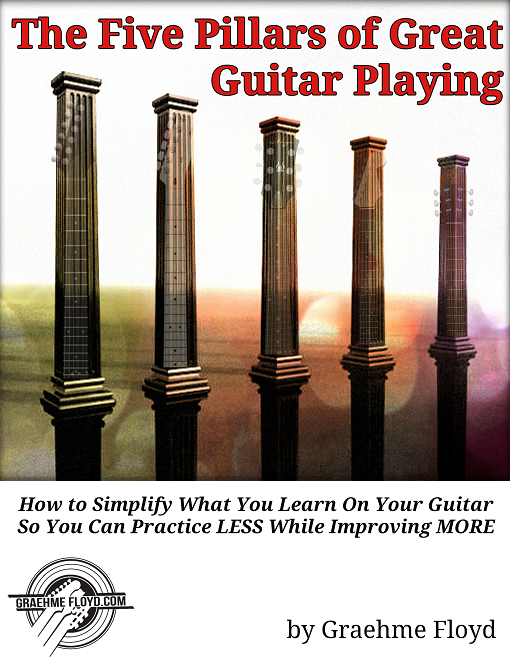 Do you shudder at the mere mention of the word “metronome”?
Do you shudder at the mere mention of the word “metronome”?
Every musician needs a good timekeeper to help them take their playing skills further in the practice room. Although the metronome is a staple in building solid time sense, you’ll be thankful for the fact that there are many different kinds of timekeepers other than that annoying, clicking box.
In this post, I’ll be going over all the various different types of timekeepers that you can use for practicing and developing your inner sense of time.
Metronome
Let’s get this one over with quickly…
Yes, the dreaded metronome. Feared by many, but revered by the best.
For those of you that don’t know, a metronome is a device that creates a clicking sound at repeated intervals to establish the beat. Most metronomes allow you to set the tempo and meter, but despite their simplicity, they are by far the most versatile of all of the timekeepers. However, they can also be the most annoying. Part of the versatility lies not in what it can do for you, but what you are able to do with it. A musician who is experienced at using a metronome can accomplish a massive amount even it can only click unaccented beats between a tempo of 60 and 208 beats per minute.
There are more metronome available on the market than I could ever list in one article. For a quick and inexpensive solution, try MetronomeOnline.com which is a free-to-use, online-based metronome. My current favorite is called the Drummer’s Metronome which I use on my phone. It has all the basic features you would expect and more, including beat exclusion, various subdivisions (8th, 16th, and triplets), time signature selection, and it even lets you save your own presets.
Click Track
A click track is a step above a regular metronome. It still provides the simple click pattern like a metronome but allows you to program changes over time. You can include tempo and time signature changes as well as create the entire layout for a song.
You are more likely to work with a click track in audio recording programs, however, you can also export them to be used on mp3 players, phones, or CD. I find click tracks to be a great companion in instrumental demonstrations for clinics and other educational events.
Drum Machine
A drum machine is an electronic device that plays drum patterns. With most drum machines, you can choose the pattern played, the tempo, and in some cases even the time signature. Drum machines are certainly an improvement over the monotone click of a metronome or click track.
They create an experience that is more like playing with a real drummer; although not quite as satisfying. You can at least be confident in knowing that the drum machine will always play perfectly in time.
Premade Drum Loops
A drum loop is a recording of a drummer playing a beat for a set period of time. These loops can be even more expressive than a drum machine but lack the ability to alter things like meter or tempo. However, it is possible to change the tempo using a program like the Amazing Slow Downer.
There are many companies that release drum loop CDs for musicians to practice with. You can also find a nearly limitless number of drum loop videos available for free on Youtube.
Custom Drum Loops
Playing with a drum loop is great, but finding one that fits your musical or creative needs can be a challenge. Luckily, there are a number of great programs available that will allow you to build your own drum loops.
In the past, the learning curve for these kinds of tools was pretty steep and required a lot of time and programming knowledge to get good results. However, programs like EZ Drummer 2 by Toontrack make building an entire song worth of drum parts incredibly easy to do.
Songs
That’s right! A song can act as a pretty good timekeeper. When you play along with a song, you have to stay in time with it or else the whole thing will fall apart.
Chances are you have already been doing this when you play along to your favorite tracks – if you haven’t done this before, then I suggest you start doing so now. It’s a great way to improve your timing and is also a lot of fun; it’s also good for relieving stress.
As with drum loops, the main drawback to playing with a song is that you can’t easily change the tempo of the song. You are also limited in what you can play over the track as certain notes, chords, and keys may not work very well.
A Real Drummer
In my own opinion, playing with a great drummer surpasses practicing with any kind of recording, device, or other timekeepers. Drummers are real people and though even the best players will have slight variances in their timing, they more than make up for it with musical interaction and creativity.
The only limitation is that few drummer would ever want to sit with you for hours so that you can practice; well, unless you were to pay them. I suggest that you leave working with a drummer for preparing material as a band.
Putting Them Into Practice
So the question becomes, “Which Time Keeper should I use?” and the best answer I can give you is all of them. Each of the timekeepers listed above has their benefits and drawbacks, and they each provide you with a different rhythmic experience.
When it comes to practicing on a regular basis, you should choose the one that fits your needs and temperament; if working with a metronome makes you want to fling your guitar out the window, then try using a drum machine instead. As far as a drummer is concerned, if you don’t have someone you can work with on a regular basis, start looking.
Now that you know the different types of timekeepers out there and have chosen one, you’ll need to know how to use it effectively when practicing.

